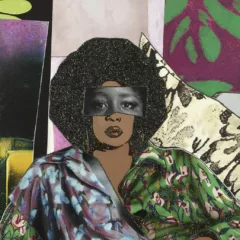[Michael explores five separate exhibitions drawn together into one space. Often unsettling or confusing, these works ask us to confront our unease. — the Artblog editors]
The five guest artist exhibitions at Vox Populi this month are explorations that unfold slowly. Each artist limits the viewer’s senses, leaving us anxious for the work to reveal something deeper.
Home sweet Homeland Security
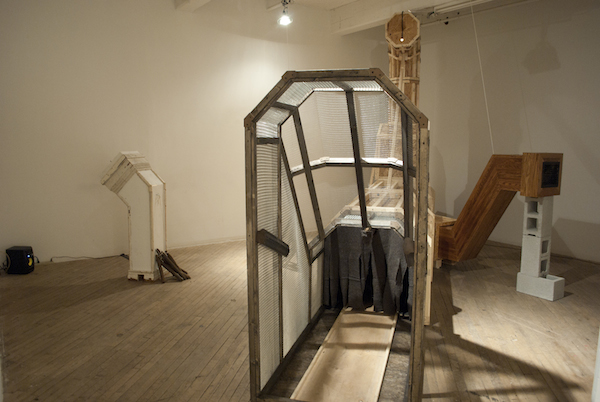
Gary Szerbaniewicz unites a cacophony of sounds and scents recalling a house under construction with an oversized wooden structure in his installation “Tom Ridge”. The sculpture’s sheer size is unsettling; accompanied by the pings and pangs that echo throughout the room, the space transforms into something else. The room is no longer a gallery, but a house in disarray, undergoing construction. Two wooden shafts emerge from the floor, capped by antique vent grates. As you peer into the grates, you see a vortex of house shrapnel vanishing into a mess of pink insulation.
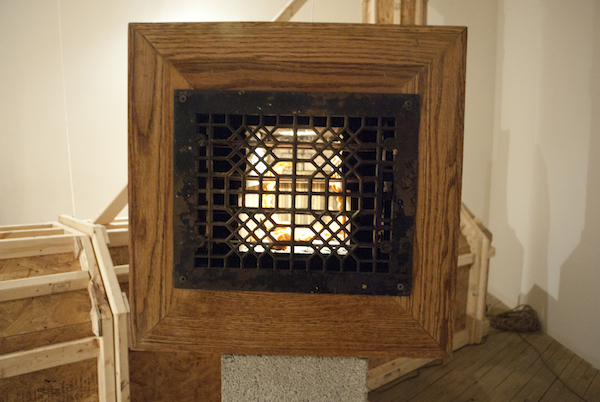
While the entire installation is immersive, nothing comes close to the experience of crawling through the cavernous, meta-subterranean tunnel of “Tom Ridge”. Here, Szerbaniewicz alienates visitors from the rest of the installation by submitting us to the wills of the dark abyss. Viewers progress on their backs, like mechanics under a car, through the tunnel–devoid of sight, hearing the occasional, echoing clunk from outside the tube.
This installation calls upon the first Secretary of Homeland Security, Tom Ridge, as it blindly leads the viewer through a burrow like a mole or a spy. Ridge was first to oversee the Department of Homeland Security, which was created after the 9/11 attacks; “Tom Ridge” comments satirically on society’s limited insight into the inner workings of our government. Rather than glorify the United States Department of Homeland Security, Szerbaniewicz criticizes it, through a whirlwind of voyeuristic vignettes of destruction, as uprooting our home at its foundation.
Seeing beyond the surface
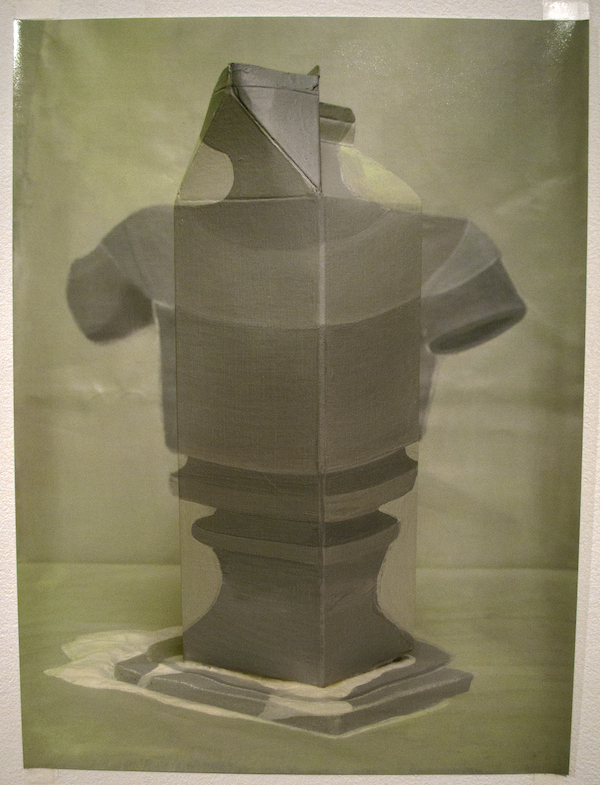
Unlike the multi-sensory engagement of the viewer involved in “Tom Ridge,” Rachel Granofsky’s series of works, phantom limbs, simply presents an optical challenge. In her series, Granofsky paints on sculptural objects and then photographs them, creating a kind of double-media double exposure. This technique obscures and confuses any sense of depth–if not sense of subject, too.
Granofsky’s images are reminiscent of Liu Bolin’s painted mimicry photographs and Alexa Meade’s living paintings; however, Granofsky’s works are unique in that they contain multiple still lives depicted on one plane. Take “Pawn,” an image of a bust imposed on a paper milk carton. It’s a photograph with two images present, challenging viewers to decipher the photograph’s complex composition.
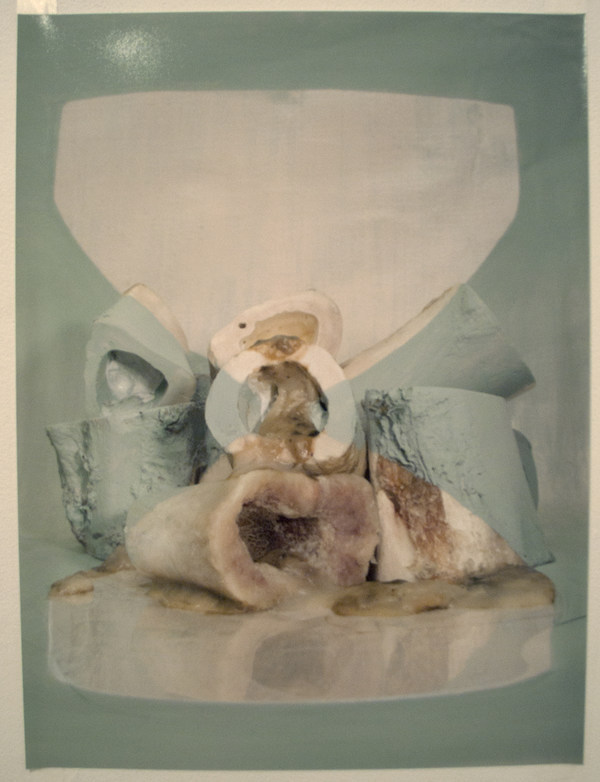
One of the most interesting images in phantom limbs is “Hourglass,” an image apparently comprised of a pile of bone fragments. A pale, light-blue frame contrasts the gritty, rotting bone marrow and mysterious paste coating the bones. From afar, the photograph appears to be a white hourglass within a blue frame. When viewed up close, the webbed bone marrow and tufts of hair and dust that stuck to the blue paint grow more apparent and obtrusive.
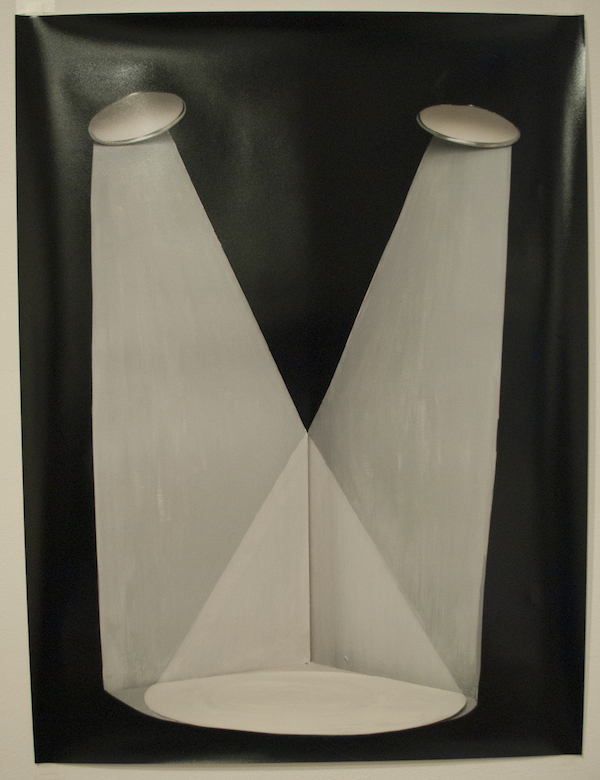
Granofsky’s use of paint draws attention to the fact that these photographs are not meant to trick the viewer; instead, we become highly cognizant of the photographed, painted surfaces. “Shaft” depicts two lamps casting painted highlights onto the ground, acknowledging that the “light” is actually a painted fallacy. Rather than attempting to deceive viewers, Granofsky slows down the viewing process by obscuring and distracting us from an immediate understanding of the composition. By this method, each photograph’s composition slowly develops in our minds, contrasting the immediate nature of digital photography.
Creating space for conversation

Erin Colleen Johnson’s “Hole” is an intimate video that requires the viewer to peer down into a video projected on the floor. Slowly, over time, the shaky home videos shown develop into an instructional video for ice fishing. Two chairs face each other on either side of the video projection, suggesting the interview that the artist recorded with Tom Johnson (the ice fishing expert interviewed in the video). Johnson’s video informs–but more importantly, emphasizes and explores–human interaction. She encourages visitors to engage in a dialogue as they sit across from one another, thus creating further conversation.
Also among the show’s visually and conceptually challenging works are a car-themed installation by Anthony Hawley and three films by Frederic Moffet. Overall, the show’s tone is one of inquiry, whether works focus on memory, authority or something else; the artists do not serve up answers, but musings.
This post has been corrected to clarify that Rachel Granofsky’s works are a double exposure of two photographs, not photos that are painted on. — the artblog editors
The five-artist guest exhibition runs May 2 – May 31, 2014. Vox Populi is located at 319 North 11th St, 3rd Floor, Philadelphia, PA 19107.



